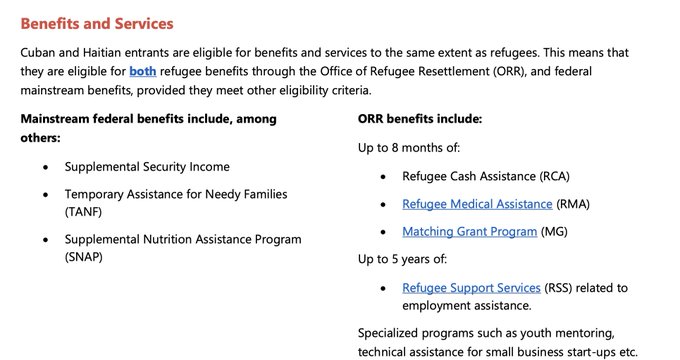Edit.
Last edited:

So here's the Cloward-Piven Strategy...
- Overload a system
- Create mass panic and hysteria as the system is overloaded
- Oversee the destruction of the system (We Are Here)
- Replace the former system with a new system

What is Happening to America? The Cloward-Piven Strategy
LISTEN to Frances Fox Piven herself in this video...
—— “People like what AOC are doing, what the squad is doing, is very important.…> it’s a very important and political moment in American political development, and we have to make the most of it, because if we don’t, we don’t know what’s going to happen, but it’s not going to be good”
• The Cloward-Piven Strategy is about radical social change by way of abusing the system to the point of Collapse
• The primary goal of this strategy is to create constant political and economic crisis’ that would destroy Capitalism and lead to the implementation of with a socialist system with a guaranteed income
• This strategy involves enrolling large numbers of people into the welfare system?
—— what do you think is happening with all these illegals?
• Everyone enrolled into the welfare system is by addition used as an army to carry out the destruction of the current system.
—— they’re organized and mobilized and made to appear as grassroots organizations demanding more from the system.
This will eventually compel the government to implement a UNIVERSAL BASIC INCOME! And force Americans to accept socialism to “save ourselves”.
Then welcome to full blown socialism… and the destruction of the United States...
Via "Center for Immigration Studies" (August 22, 2024)Most of this post is excellent. I just wanted to address one detail. The map showing sanctuary jurisdictions is misleading in the case of Nebraska. It shows a bunch of points stretching across the state from east to west. However, I looked at them more closely, and here's what I found.
In Nebraska, neither the state, any of the counties, nor any of the cities identify as sanctuary cities. On the map, there are a bunch of tan markers in Nebraska. I went to the original map website where you can click on each marker to see what it is. These markers show that these jails have a non-cooperative policy with ICE, as far as holding ICE prisoners.
However, almost all of them are in extremely tiny places. For example, the Arthur County jail is shown as non-cooperative. Arthur County has a population of 434. I suspect at most they have a short term lockup if they ever needed to detain anybody, and would have to transfer any actual prisoners to a larger jail somewhere in their region. It's no wonder they are not equipped to handle ICE prisoners. I suspect they would still cooperate as much as they could, given their limitations, but they must have appeared on a list of non-cooperative facilities at some point.
The one exception that I see in Nebraska is in the Omaha area. Unfortunately, Omaha and Lincoln are outposts of leftism in an otherwise deep red Republican state, and by that I mean old time Republican, not what the modern uniparty RINO GOP has turned into.
While I think Nebraska is largely innocent of the impression this map gives, I suspect most of the blue states and blue metro areas in the country are even worse than they appear on this map.
Summary
The new episode of the Center for Immigration Studies’ podcast, Parsing Immigration Policy, focuses on the Center’s updated map of sanctuary jurisdictions, based on data from Immigration and Customs Enforcement (ICE). Joining host Mark Krikorian, executive director of the Center, is Jessica Vaughan, the Center’s director of policy studies, who explains her update of the map.
The update adds about 170 new sanctuary locations, mostly counties (including regional jails) as well as some cities. Some of these newly listed sanctuaries are in states that prohibit such policies, such as South Carolina, Indiana, Georgia, Idaho, Kansas, and North Carolina.
Virginia, North Dakota, Nebraska, New York, and Minnesota have seen the most significant increases in sanctuary policies.
The Center's updated map is based on ICE's internal tracking, adding information from the document entitled "Detainer Acceptance Tracker – Limited and Non-Cooperative Institutions," obtained via a Freedom of Information Act request. The Center’s map is a collaboration between Vaughan and multimedia director Bryan Griffith, and has been used to track sanctuaries since 2015, using ICE information and open sources.
Since then, well over 10,000 deportable criminal aliens who were arrested by local authorities for state and local crimes have been released back to the streets due to sanctuary policies, despite ICE seeking custody with a detainer, and a significant share have committed subsequent crimes. For example, in a documented eight-month period during 2014-2015, about 1,800 of 8,000 criminal aliens released by sanctuary jurisdictions were rearrested for committing 7,500 new crimes.
“It is alarming to see the continued proliferation of sanctuary policies, especially in places like Virginia,” Vaughan notes, “where ICE has had to use its scarce resources to re-arrest violent gang members and rapists in our communities who were set free by local jails, when they should have been transferred directly to ICE custody for a plane ride home.”
Vaughan continued: “Federal and state lawmakers should adopt measures to better ensure that local law enforcement agencies cooperate with ICE, and to penalize those agencies that choose not to cooperate.”
In his closing commentary, Krikorian discusses the Democratic Party’s 2024 immigration platform introduced this week at the party’s convention. The platform embraces the U.S. Citizenship Act, a radical piece of legislation introduced in January 2021, that would have granted amnesty to all illegal immigrants in the U.S. as of January 2021 and even allowed the return of many previously deported illegal immigrants. This position contrasts sharply with the Republican position on immigration enforcement, setting the stage for an unambiguous policy debate.

Haitians eligible for SNAP -
SNAP Eligibility for Non-Citizens | Food and Nutrition Service
www.fns.usda.gov
Haitians get Refugee Cash Assistance -
Refugees
www.cdss.ca.gov
Haitians get SSI -
SSI Spotlight on SSI Benefits for Noncitizens | Supplemental Security Income (SSI) | SSA
An alien may be eligible for SSI benefits if he or she meets the requirements of the laws for noncitizens.www.ssa.gov
Haitians get refugee rent assistance and get to skip credit checks for housing.
Haitians get 8 months of free health insurance, followed by Medicaid and CHIP if eligible -

Health Insurance
Thanks to the health care law, the health insurance landscape for refugees and other Americans is changing for the better in 2014. Many refugees, who could only get eight months of insurance through RMA, will be able to get ongoing health insurance through the Marketplace.www.acf.hhs.gov
Refugees get 5 years of support from ORR, which includes day care for children -

Refugee Support Services
ORR annually distributes formula funds to states to provide social services to refugees who have been in the U.S. less than five years.www.acf.hhs.gov
Driver's licenses for refugees -

Court issues injunction against law involving humanitarian driver's licenses • Indiana Capital Chronicle
A federal judge granted an injunction that would allow all humanitarian parolees to apply for an Indiana driver's license or ID card.indianacapitalchronicle.com
Even more private initiatives here -

The federal government turns to local communities to help refugees settle into the US, but community-based programs bring both possibilities and challenges
Citizens are helping refugees get settled in the US, but the lack of standard federal rules makes the process tricky for both refugees and citizens to navigate.theconversation.com
Springfield Armory, Massachusetts...but yeah, I totally get your point.I find it highly ironic that such mess happens in Springfield, a town which once produced the correct tool to mitigate such crisis but now is completely toothless.


Jamie McGregor:
I wish I had 30 more. Our Haitian associates come to work every day. They don't have a drug problem. They will stay at their machine. They will achieve their numbers. They are here to work. And so, in general, that's a stark difference from what were used to in our community.

